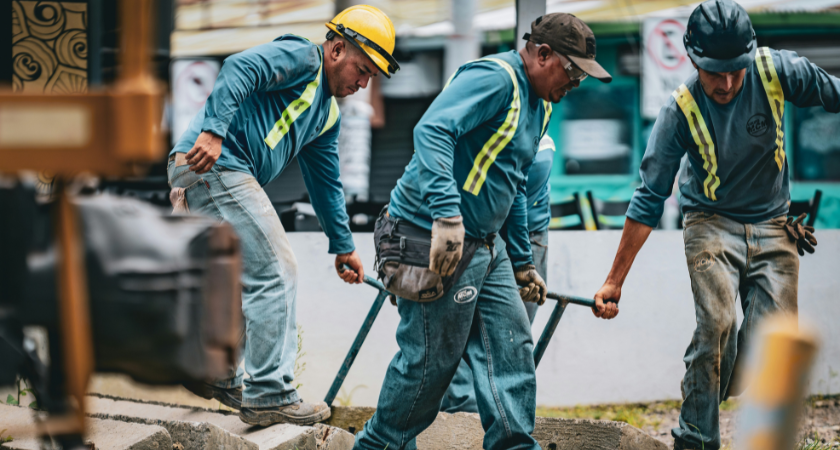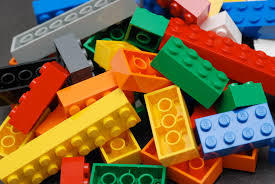
CHESTERFIELD COUNTY, Va. — The LEGO Group’s ambitious $1.5 billion manufacturing and distribution complex in Virginia has entered its next major phase of construction, signaling significant progress toward one of the largest manufacturing investments in the state’s history.
Originally announced in April 2023 with an anticipated completion in 2025, the timeline has been revised to target 2027, reflecting expanded project scope and sustainability commitments. The 1.7 million-square-foot campus will include both a factory and a regional distribution center—marking a new chapter in LEGO’s North American operations.

The Virginia facility aligns with LEGO’s broader environmental and energy goals. Once completed, the site will be powered by an on-site solar plant with a capacity of 35–40 megawatts (MW), enabling the company to make major progress toward its sustainability benchmark of “reducing absolute global carbon emissions by 37% by 2032, compared to 2019 levels.”
The solar installation will be one of the largest corporate renewable projects in the Mid-Atlantic region, supporting LEGO’s transition to cleaner energy and contributing to the state’s renewable energy targets.
The plant will also incorporate energy-efficient manufacturing systems, rainwater harvesting, and recyclable materials throughout construction and operations—reflecting LEGO’s global push toward circular production practices.
The Virginia site will be LEGO’s second manufacturing plant in the Americas and its seventh worldwide, joining facilities in Denmark, Hungary, the Czech Republic, China, and Mexico.
While operations currently run through a temporary packing facility, full-scale production will ramp up gradually once construction is complete. The company expects to expand from around 500 current positions to roughly 1,700 jobs over the next decade, making it a cornerstone of regional employment growth in Chesterfield County and beyond.
“This project reflects LEGO’s long-term commitment to North American growth and sustainable production,” said a LEGO spokesperson. “The new factory will not only bring high-quality manufacturing jobs to Virginia but also ensure that our products reach families across the Americas faster and more efficiently.”
The construction of LEGO’s new plant has implications beyond toys—it’s also expected to affect the North American plastics market, particularly demand for acrylonitrile butadiene styrene (ABS), the primary material used in LEGO bricks.
The ABS polymer, known for its strength, color stability, and resistance to scratching, is key to maintaining LEGO’s global quality standards. With production scaling up in the U.S., analysts suggest a potential increase in domestic ABS demand, especially as LEGO continues to outperform the broader toy market.
Despite global economic headwinds, LEGO reported a 13% increase in consumer sales in the first half of 2025 compared to H1 2024, reflecting its brand strength and global reach.
Although overall ABS demand has been weaker than expected in 2025, sources note that “the LEGO segment continues to show improvement and optimism.” Once the Virginia facility is fully operational, it could help drive a rebound in North American ABS production and utilization rates.
LEGO’s R&D and patent activity reveal continued investment in developing recycled and bio-based ABS alternatives. The company’s ongoing material science innovation supports its global sustainability targets while ensuring the same play quality and color consistency that LEGO fans expect.
“Patent activity continues to reflect ongoing efforts to develop recycled ABS for LEGO bricks,” the report noted, “suggesting that ABS will remain an important material for LEGO for the foreseeable future.”
This commitment comes as U.S. ABS capacity has tightened following the closure of the INEOS Styrolution Addyston facility, amplifying the market impact of LEGO’s investment.
Additionally, with upcoming U.S.-Mexico-Canada Agreement (USMCA) negotiations in 2026, trade discussions could further influence raw material costs and regional supply dynamics. The U.S. government began collecting public feedback on September 16, 2025, ahead of the first joint review scheduled for July 1, 2026.

While ABS remains LEGO’s dominant material, the company’s products rely on a wide range of plastics:
These materials together enable LEGO’s hallmark combination of durability, color precision, and versatility, key attributes that sustain its global reputation for quality.
Virginia officials have lauded the project for its potential to catalyze regional manufacturing growth, attract suppliers, and strengthen the state’s clean energy ecosystem. The investment complements ongoing infrastructure upgrades in Chesterfield County, making the region an emerging hub for advanced, sustainable manufacturing.
Economists estimate that LEGO’s long-term presence could generate hundreds of millions in economic output annually, alongside increased local tax revenues and secondary job creation through suppliers and logistics partners.
As the Virginia plant enters its next construction phase, LEGO’s expansion represents more than just a new factory—it’s a strategic move toward regional resilience, environmental responsibility, and innovation-driven growth.
With global demand for LEGO products holding strong and its sustainability ambitions accelerating, the Virginia project underscores how legacy brands are redefining manufacturing for a new era.
Once completed in 2027, the facility will stand as a symbol of LEGO’s enduring creativity, environmental vision, and commitment to U.S. growth.
Originally reported by Anna Nehls in ICIS.